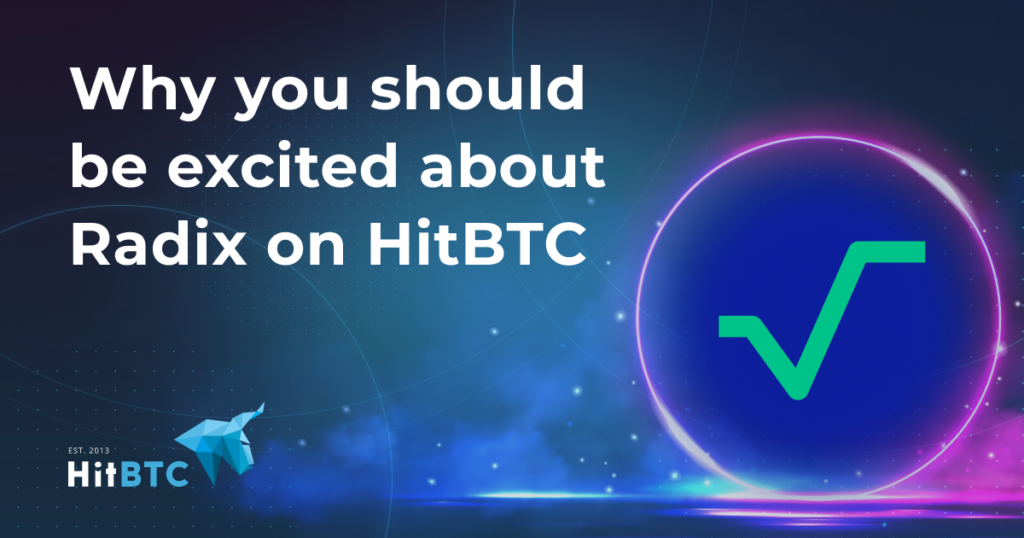HitBTC is pleased to announce that XRD, the Radix network’s native token, is now available on its platform. XRD is used to protect the security of the Radix Network by staking the Radix Network into its Delegated Proof of Stake mechanism. Users simply use XRD to pay transaction fees in the Radix network, and it can also be used as a medium of exchange.
XRD currently provides spot trading of the XRD/BTC and XRD/USDT trading pairs on HitBTC.
The addition of XRD to HitBTC is another step towards improving access to the Radix network, which already has an ecosystem of over 130 projects in development and over 750 tokens (and growing). Radix Network is preparing to launch real-time smart contracts in the second quarter of 2023 as part of its “Babylon” upgrade.
About cardinality
Radix is a smart contract platform that provides a better experience for users, developers and capital. After 10 years of engineering, Radix’s full-end technology is now ready to start growing its DeFi and Web3 ecosystem for mainstream users and developers.
There are three reasons:
1. Better user experience
Today’s Web3 and decentralized finance (DeFi) user experience is completely inadequate. From blindly signing your Bored Ape, to billion-dollar hacks and exploits, it seems like cryptocurrencies are being hacked, lost, or stolen every week. With the user experience provided by today’s smart contract platforms, Web3 will not become mainstream.
Common mistakes, such as misplacing the seed phrase, can cause users to permanently lose funds (an estimated 20% of all Bitcoins have been lost due to this).
In order to significantly improve the user experience, Radix had to redesign the entire concept of smart contract platform from bottom to top. If the platform does not have “native assets”, there is no way to fix blind signatures. If there is no “smart account” (native account abstraction) on the ledger, the mnemonic phrase cannot be corrected.
Radix launches five platform-level innovations that will significantly improve user experience in the second quarter of 2023:
- Smart Account
- Role
- radix join
- native assets
- transaction list
Finally, using Web3 is as easy and secure as your banking application.
2. Better programming experience
Currently, the development of decentralized finance (DeFi) and Web3 is full of challenges. It can take years for developers to gain enough experience to build production dApps, and even then they can fall victim to billions of dollars worth of hacks and exploits. The problem is not that there is a lack of talented developers in the industry, but that there are insufficient tools available to them. These tools are not suitable for the level of trust required to manage $400 trillion in finance.
The fundamental problem is that existing platforms don’t understand what assets are. Tokens are simply variables (numbers) listed in a smart contract created by the developer. Any update to the token balance depends entirely on the developer’s logic, which the platform follows blindly. If a developer makes a small mistake, tokens in smart contracts can be lost, and there are no platform-level verifications or protections to prevent this from happening.
As a result, according to an RDX Works survey of nearly 1,000 Web3 developers, developers spend 80% of their time protecting and validating their code and only 20% on the actual functionality they want. However, Radix’s Scrypto programming language, combined with the Radix Engine virtual machine, allows developers to build what they want without having to worry about the low-level security and verification required to secure their smart contracts (even so, we are still seeing developers Personnel’s smart contract was hacked)).
The Scrypto programming language, combined with the Radix Engine, provides a new developer experience designed to make it easier and faster for developers to learn, build and launch projects on the Radix network without compromising security.
To learn more, see Problems with Smart Contracts Today.
3. Bring a better experience to capital
In order for DeFi and Web3 to compete with existing financial infrastructure, an unlimited number of users must be able to quickly, seamlessly and cheaply deploy their capital (tokens) to decentralized applications (dapps). random combination. In other words, the platform must be scalable.
However, current scalability solutions are not enough. They either reach scalability limits and cannot handle more transactions than a single computer (vertical scaling); or they scale through “sharding” or “layer 2” solutions (horizontal scaling), which breaks the sharding or “Atomic composability” between layers 2. Atomic composability refers to the ability for all parts of a transaction to settle together, so users are not left with assets they don’t want during the transaction. Sacrificing atomic composability disrupts the ecosystem, resulting in a poor experience for users, developers, and capital.
Radix’s scalability solution Cerberus was developed from 2013 to 2020. It is not a blockchain, but an entirely new consensus algorithm that allows for infinite linear scalability while retaining atomic composability of the entire ledger. The sharded form of Cerberus will be released as part of the Radix Xi’an mainnet update, currently scheduled for release in 2024.
To understand what makes Cerberus unique, check out the Cerberus infographic series.
To learn more about Radix, be sure to watch the RadFi keynote here.

